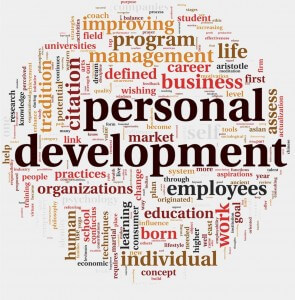We, at the Free Management Library like to share other views as well and use Guest Bloggers. Gena Taylor of Maestro eLearning is the guest blogger for Training and Development. She interviewed Becca Hammer, the Director of Training at Milwaukee Journal Sentinel and JS Online.
Gena’s interview with Becca explores the difficulties of being a trainer and how to overcome them, along with tips and advice to make your training more effective and even more engaging.
Q. What inspired you to become a professional trainer?
I started my career in advertising sales at a small daily newspaper. I then went to sell advertising at The Kansas City Star where I sold to both small mom and pop businesses and eventually some of our largest healthcare customers. I have a deep appreciation for how businesses at every level approach the market and the promotion of their businesses.
In 1997 I became a volunteer for Junior Achievement. I took on the notoriously wiggly classrooms of first, second and third graders. What I discovered was that after every JA session I facilitated was that I felt exhilarated and ready to tackle the day. Teaching was fun! This was something I really liked.
In doing an annual career assessment, you know, that “where do you see yourself in 5 years, 10 years?” question; I took a long look at how much longer the selling of advertising was going to continue to satisfy my desire to grow. The pieces started coming together. I am a self admitted know-it-all and always want to know more and liked being the person co-workers would turn to with questions. Couple that with a passion for sales and a genuine interest in helping people understand concepts, and viola! – a trainer was born.
Since my start as a trainer doing on-boarding and New Hire training I have developed and trained sales people on consultative selling, online advertising, what makes advertising work, how to set budgets, how to measure results, countless product training sessions and much more. My position as a trainer has also lead to stints reporting to HR where I developed programs to teach: ethics training (why, yes, yes it can be fun), Basic Business Acumen, ongoing coaching and development, difficult conversations, annual reviews that make sense and almost anything else that needed to be trained on.
Becoming a trainer has been completely the right decision for me. I believe that very few people are doing what they do best and love. I am one of the lucky few that springs out of bed every day that I know I get to be involved in training!
Q. How do you make your training materials exciting and engaging for your audience?
Before I begin developing the training, I really try to understand what we need to happen as a result of the training and WHY that isn’t currently happening. When I can engage an audience right off the bat with their issues, demonstrate that I understand their pain and why it causes such a problem, I can usually get buy-in and they are more likely to stay with me.
As I describe the issue at hand I like to develop analogies. Often times, a training attendee is too close to the situation to see the bigger picture and why what they are doing isn’t working so if I can tell them a story that helps them see their issue through a different lens, it helps them see the problem for what it is.
For a team struggling with identifying a customer’s need in the consultative selling process, the analogy might sound like this:
“Imagine you go to your doctor’s office and when the doctor comes in and asks you how you are you tell her that you have a headache she says, “Aspirin, you need aspirin.”
And you say, “Well ok, but do you think that will work, it’s a throbbing pain.”
And the doctor replies, “Aspirin. Definitely aspirin.”Well, you are reluctant but she is the expert and went to medical school and she should know what she’s talking about so you agree to take some aspirin hoping it would fix your problem.
She cheerfully tells you to have a nice day as she heads out of the room satisfied in knowing that she has cured another patient as you finally ask, “Should I try to take the knife out of my head myself?”
Then I ask the team, “how many times have you prescribed ‘aspirin’ to your customer who really needed surgery?” Everyone laughs and then we go into the value of asking questions and how you become the “Sales Doctor.”
The visual to go along with this story are rapid-fire single image slides of patient, doctor, aspirin, patient, doctor, aspirin, question marks, patient with knife. It’s effective.
I will vary the impact of visuals so that sometimes the images go in rapid fire succession, then alternate with numbered lists or information pieces so that it never becomes a typical PowerPoint slideshow.
Q. Do you have certain tricks you use to make your audience more interactive?
I believe that having an audience that participates helps in retention of the material, so I work hard to make sure they are participating. There are several things I do to keep them engaged and active, including standards like breaking them up into groups to do small discussions. I like to get them out of their chairs and moving by posting big flip chart pages around the room and have them do a “gallery walk” where they can comment or vote on the items on the page. I then have one of the participants co-facilitate the comments to the rest of the group. Even if that is just reading the comments then we discuss the importance or value of the issue. It lets the audience know that at any time they may be called on to “help.”
Humor helps too. If there is a learner who has not commented at all and seems to be detached from the group, I will stop and call on them as if they had raised their hand to comment. When they say, “oh nothing, I didn’t have anything to say,” I will say something like, “You made eye contact. Every trainer knows that they only time that people make eye contact with them is if they want to say something. Did I read that wrong?” It lightens the mood and indicates to the people that I am plugged into them.
If I can’t get anyone to say anything, I have become an expert at playing the silence card. After what seems like an unbelievably long uncomfortable silence (maybe 1-15 seconds) I will say, “perhaps you misunderstood, this is the part where YOU get to talk.” Then I repeat the question, and wait. I have told quiet groups, “I’m here for the duration, the more you talk, the faster we get done.” They always start talking after that!
When hosting online training it is very difficult to know if your audience is engaged, so I try to put little interactive quizzes peppered throughout the session. They can be a quick review of the material we just covered, opinion polls, guessing games, just anything that breaks up the material and keeps attendees attention.
Q. How has training changed from the past to present? Where do you think it will go in the future?
When I first started as a sales rep, training was typically classroom, off-the-shelf, non-customized material that could be used by any one. Sales training emphasized gimmicks and techniques to get people to buy your product with you and display your product as the main “winner,” as if sales were a win-lose proposition. Training was also thought of as a “have-to” by attendees that was meant to “fix” them. It was assumed that one 2-hour training session would cure what ailed an employee and they would make improvements as a result of a training session alone.
Happily, at many organizations, training has lost a lot of those characteristics. Training is much more customizable than it previously was; more so if you have a staff trainer who can also build training. There is also an understanding that sales training has to come out as a win-win if you want to have any hope of continuing the relationship and make future sales.
It has taken countless hours and untold wasted dollars, but organizations that get it right have learned that training is just the start. They realize that training, without specific desired outcomes and consistent follow up, is just a waste of time and money. Companies have learned that to have successful execution of strategic plans that training and coaching employees and then training them some more is a key element to success.
Two of the most important changes in training over the past 10 to 15 years have been the way training is delivered and the expectation of training by employees. With technological advances, training can be done in-person, over the web or in a pod-cast. It can be done when it works for the employee and not when the trainer schedules it. Groups in the same building or across the globe can all participate simultaneously and interactively.
Thanks to nearly two generations who have never been without computers and constant access to learning opportunities, training has become something strongly desired by many employees instead of something seen as a waste of time or requirement. We consistently see in employee engagement surveys that employees demand access to training and development. Interviewees consistently ask what the on-boarding and continuing training programs look like at our company. It’s a good time to be in the training business!
Q. Do you have any tips your would offer other trainers?
Attend as much training as you can, not only to constantly learn new things, but so that you can see how others are effectively (or maybe-not-so effectively) getting the message out. This especially applies to online training. It seems as if there are many classroom facilitators who have been thrown into online training and have not adjusted their delivery to suit the needs of an online audience.
Challenge yourself to try new things in your training. Just today I was reminded of the saying, “Sometimes when you think you are in a groove you are really in a rut.” Are you still communicating that new hire training material effectively after delivering it sixty-five times the exact same way? What small changes can you add that make the material more relevant, more engaging or more helpful so that the participants understand it better?
The most powerful way I have found to improve is to videotape myself doing training. There is just nothing under the sun that can communicate what you can change faster or more effectively than seeing it on video. Once you get past how mortifying it is to see yourself fidgeting with the pen, dancing, swaying or standing like a statue the quicker you can get on to being the rock star trainer you know you are.
Q. What kind of literature inspires you?
Since I love learning about sales and presentations I like to follow Jeffery Gitomer to make me smarter in not only how to sell but how to very effectively market and present a business, I like to watch videos on TED to watch how people of influence spread their message. There are a couple of training groups on LinkedIn that I find to be very worthwhile. When it comes to community groups that you find on LinkedIn, I prefer discussions that are moderated so the content stays timely and on topic and doesn’t stray to self-promotion.
I subscribe to any industry e-newsletter that I can that I think can help me be more knowledgeable about training, advertising and sales. I can’t always read every one of them in depth but I dedicate time each day to learning more about what I do.
Maestro eLearning is a customer service company in the business of creating custom online training courses. They’re collaborating with industry professionals to deliver more value in their series “Trainer Talks.” If you would like to participate in an interview, contact [email protected].
—
For more resources about training, see the Training library.
If you would like an opportunity to guest blog on training and development topics, contact me through the email on my website or my profile on LinkedIn. For a look at the human side of training from my Cave Man perspective, please check out my book, The Cave Man Guide to Training and Development. Happy training.
 Sections of this topic
Sections of this topic














